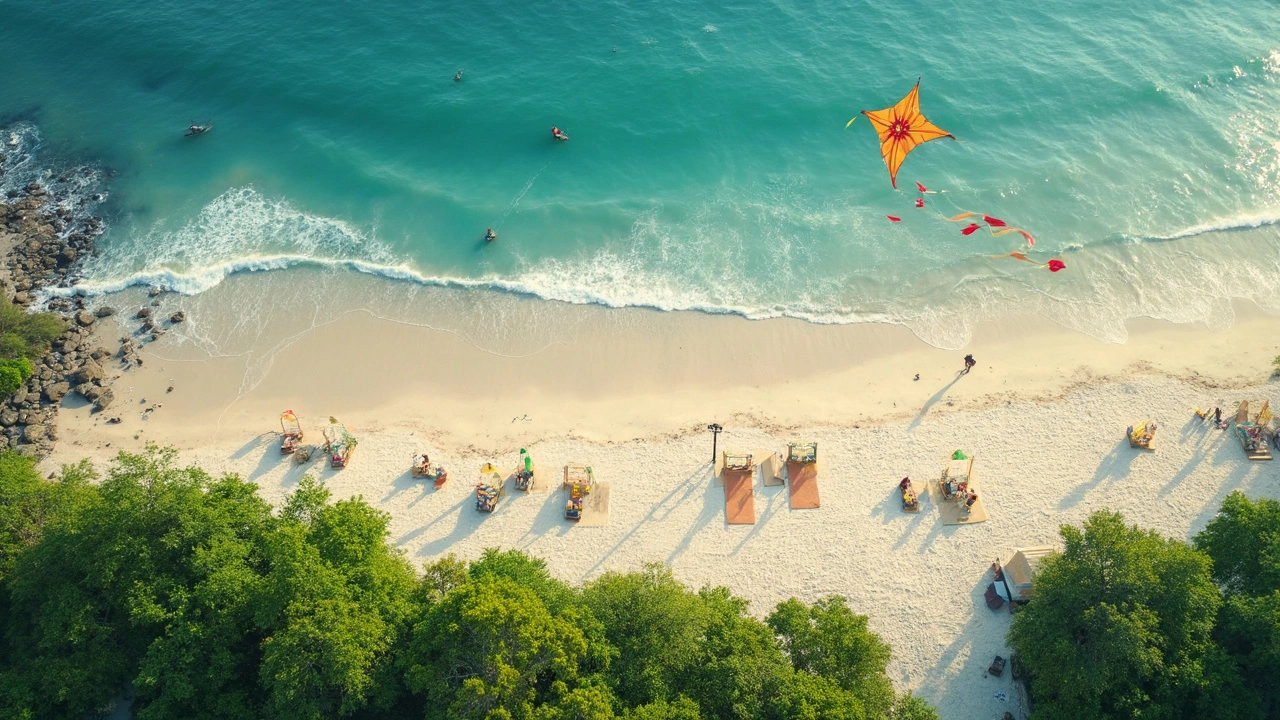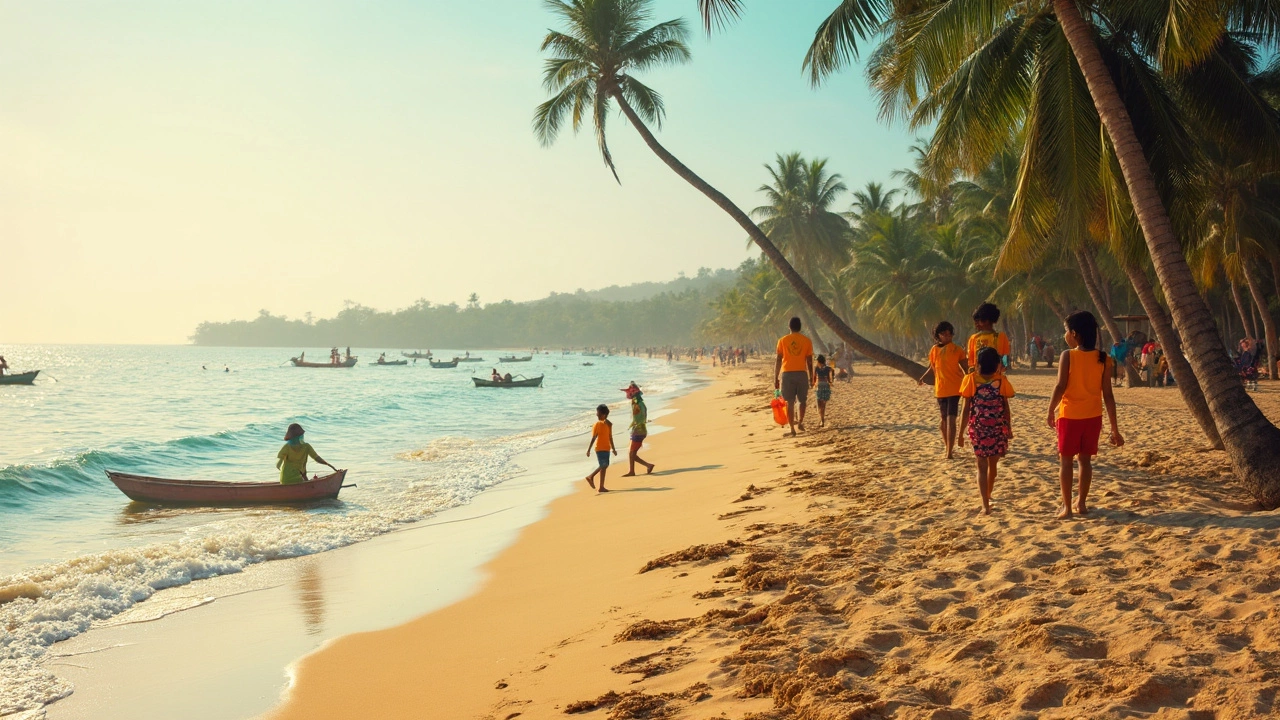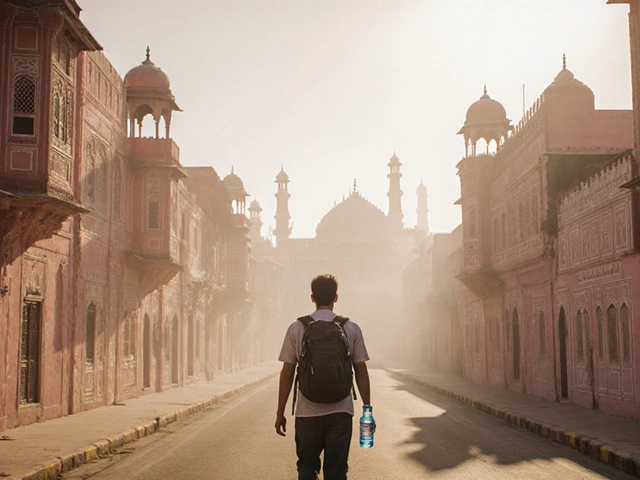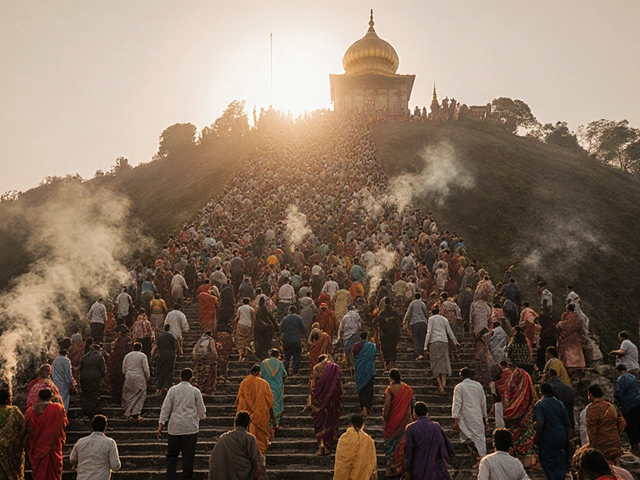There’s nothing worse than showing up at a beach, eager to relax, and being greeted by a mess of trash and plastic bottles. A lot of us dream of those Instagram-worthy white sands and clear blue water—but real life can ruin the fantasy fast if you don’t know where to look. In India, most folks are surprised that the cleanest beach isn’t on the mainland, but way out in the islands.
Before we get to the best spot, it helps to know: what actually makes a beach the “cleanest”? It’s not just about picking up litter. It’s the water quality, how the sand is maintained, the rules that keep pollution away, and even the behavior of visitors. Some beaches get regular checkups and reports, not just by local teams but international organizations, making it pretty official.
- Why Clean Beaches Matter
- How Cleanliness is Measured
- Spotlight: Radhanagar Beach, Andaman
- What Makes Radhanagar So Clean?
- What to Know Before You Visit
- Tips for Keeping Beaches Pristine
Why Clean Beaches Matter
Everyone loves going to the beach, but not everyone thinks about how much it matters to keep those places clean. It’s not just about getting nice vacation photos—clean beaches make a real difference for everything from your health to local jobs.
For starters, dirty beaches can make people sick. The sand and water at polluted spots often contain bacteria and chemicals that cause rashes, stomach problems, or worse. According to the Ministry of Environment, Forest and Climate Change, over 60% of waterborne illnesses in Indian coastal tourists have been linked to poor water quality. Clean beaches mean safer swims and worry-free relaxation.
When it comes to wildlife, trash and plastic are a huge problem. Animals like turtles, fish, and birds often eat small bits of plastic by mistake, which can kill them or mess up the whole local food chain. The United Nations Environment Programme says up to 13 million tons of plastic end up in the ocean each year—much of it washing up on popular beaches.
Now let’s talk about business. No one wants to pay for a beach holiday at a place covered in garbage. Clean beaches attract more tourists, and that’s good news for hotels, restaurants, and small shops that rely on visitors. In Goa, for example, studies show a 25% jump in hotel occupancy when beaches are cleaner at the start of the season.
| Beach Issue | Impact |
|---|---|
| Pollution | Health risks, loss of marine life |
| Litter | Fewer tourists, damaged reputation |
| Plastic waste | Harms animals, ruins views |
So if you’re choosing a spot, picking the cleanest beach in India isn’t just about bragging rights. It’s about enjoying yourself, staying healthy, and even helping local communities keep their livelihoods.
How Cleanliness is Measured
So, how do experts figure out which beach gets the crown for being India’s cleanest? It’s not just about sweeping up trash every morning. There are set standards and routine checks that put a beach on the map for being truly clean and traveler-friendly.
The most trusted marker is the Blue Flag certification. This isn’t some random sticker—it’s an international badge given to beaches that actually walk the talk. To even be considered, a beach has to meet 33 different criteria. These cover all the daily stuff: water quality tests, safe swimming zones, regular cleaning patrols, easy-to-find bins, working toilets, lifeguard presence, and even eco-education for visitors.
- Bacteria levels in water are closely watched, with frequent lab tests to make sure they’re safe for swimming (Escherichia coli and intestinal enterococci are the usual suspects tested).
- Sand is checked for litter, broken glass, cigarette butts, and sharp objects.
- There must be clear signs showing safety rules, emergency contacts, and guidelines against bringing plastic.
| Criteria | Measured By | Standard |
|---|---|---|
| Water Quality | Microbiological tests (E. coli, enterococci) | Must meet bathing water standards (EU/WHO) |
| Beach Cleanliness | Visual inspections, waste bin availability | No major litter; easy waste disposal |
| Safety & Services | Lifeguards, accessible toilets, info boards | Required for Blue Flag beaches |
| Environmental Management | Awareness activities, protected zones | Mandatory eco-education and habitat care |
Regular audits mean a beach can lose its title if it slips up. For example, if water samples turn up dirty, the Blue Flag comes down. So when you see the Blue Flag flying, you know it’s the real deal. Out of the dozens of beaches awarded this, only a handful in India have ever hit the mark. And yes, the cleanest beach in India is always on that list—year after year.
Spotlight: Radhanagar Beach, Andaman
If you ask travelers and clean freaks where to find the cleanest beach in India, almost everyone points to Radhanagar Beach. This beauty is tucked away on Havelock Island in the Andaman and Nicobar group. No big cities, no chaos—just a wide, sandy stretch with clear blue water that looks unbelievable in real life.
Don’t just take my word for it. Back in 2004, Time Magazine named Radhanagar Beach the “Best Beach in Asia.” Even now, it's regularly ranked in the top ten on TripAdvisor’s Travelers’ Choice list. The beach holds a Blue Flag certification, which is kind of like the gold medal for beaches. It’s proof of high standards for water quality, sanitation, and safety.
| Fact | Details |
|---|---|
| Location | Havelock Island (Swaraj Dweep), Andaman & Nicobar Islands |
| Certification | Blue Flag Certified since 2020 |
| Length | About 2 kilometers |
| Best Visiting Months | October to April |
What stands out here isn’t just the beach itself, but how everything is managed. No plastic is allowed anywhere near the sand, and there are plenty of dustbins placed every few meters, which makes it super easy to not be a litterbug. Lifeguards keep a close watch, and the swimming area is marked for safety.
Wildlife lovers will spot sea eagles, and if you get lucky, you might even see elephants taking a stroll by the water. The water stays clean because there’s almost zero construction nearby—just trees, beach huts, and maybe a snack stall or two, all set back so the shoreline stays untouched. Alcohol and smoking are banned, which means no beer cans or cigarette butts tossed around.
If you want to swim, Radhanagar has lifeguards and clear posting for safe zones. Water quality is tested all the time to keep it as safe as it is beautiful. All of this adds up: if you care about hygienic, trash-free relaxation, this is where to go.

What Makes Radhanagar So Clean?
If you ask travelers about the cleanest beach in India, Radhanagar Beach pops up over and over. So, what’s their secret? Turns out, it’s not just the location. Keeping Radhanagar spotless is a serious, round-the-clock mission involving both the locals and the authorities.
First, the beach sits on Havelock Island in the Andamans—a spot not packed with big cities or factories nearby, which keeps industrial pollution basically zero. Strict government rules keep outsiders from building randomly or dumping waste. The beach is checked daily by a dedicated cleaning crew. They pick up trash, sweep the shore, and even clean up after tourists, just in case someone leaves behind a plastic bag.
There’s a big focus on keeping plastic in check. Vendors can’t use single-use plastics on the beach. If you’re caught throwing away a wrapper, you could get a fine (no kidding—it’s up to ₹5,000). Cafes and shacks near the beach stock up on reusable items and encourage people to bring their own bottles or bags.
Local wildlife officers also help keep things in order. They run awareness campaigns for tourists about how trash can harm the fragile ecosystem. You’ll see signboards everywhere telling you exactly where to toss your garbage. Washrooms and changing zones are well maintained, so visitors don’t end up using the bushes or the beach itself.
- Zero plastic policy on the beach
- Daily manual and mechanical cleaning
- Regular water and sand quality checks
- Well-marked bins for waste separation
- Dedicated awareness programs for tourists
If you love facts, check this out: Radhanagar was given the ‘Blue Flag’ eco-label in 2020, which means it hit international benchmarks for cleanliness, safety, and environment-friendliness. Only a handful of Indian beaches have this status right now.
| Feature | Radhanagar Beach | Typical Mainland Beach |
|---|---|---|
| Daily manual/beach cleaning | Yes | Occasional |
| Single-use plastic ban | Strictly enforced | Rarely enforced |
| Blue Flag certification | Yes | No |
When you walk on Radhanagar, you’re seeing the result of these combined efforts. That’s why this beach isn’t just beautiful—it’s famous for being cleaner than any other spot in the country. If every beach followed even half these steps, things would look very different.
What to Know Before You Visit
So you’ve heard about Radhanagar Beach and now you’re actually thinking of going? Smart move, but let’s get the basics straight before you start packing. This beach is on Havelock Island, which belongs to the Andaman and Nicobar Islands. The easiest way to reach is to fly into Port Blair and then hop on a government or private ferry. No direct flights land right on Havelock.
Once there, you can grab a local auto or rent a scooter to get around, but the beach itself closes by sunset—strict rules here, not your usual midnight stroll.
| Essential Details | Info |
|---|---|
| Location | Havelock Island, Andaman & Nicobar |
| Entry Fees | None for the beach, vehicle parking may cost extra |
| Best Time to Visit | October to April |
| Open Hours | 6 am to 6 pm daily |
| Availability of Food & Drinks | Food shacks nearby, but no plastic allowed |
A cool fact: Radhanagar was awarded the “Asia’s Best Beach” title by Time Magazine years back, and it still earns top marks almost every year for being stunning and clean. Don’t expect beachside parties or water scooters, though—the people here guard the peace and cleanliness hard. Loud music, glass bottles, campfires, and single-use plastics are not allowed anywhere near the sand. The lifeguards do regular patrols, and you can’t swim after dark, even if you bribe them (not a good idea here anyway—rules are strict!).
- Carry reusable water bottles—the shops won’t sell you disposable ones.
- No changing rooms right on the beach, but some restrooms are available nearby. Pro tip: bring your own towel and a change of clothes in a small bag.
- Waste bins are everywhere, but they fill up quick—don’t leave your trash, even if bins are overflowing.
- If you're planning to take photos, drones aren’t allowed without special permits.
Visiting the cleanest beach in India is all about soaking up the sun responsibly. There’s no glamor in breaking the rules here—it actually kicks you out of paradise. Respect the local vibe, plan your trip around the weather, and keep your eco-warrior hat on. That’s the secret to an awesome (and guilt-free) Radhanagar trip.
Tips for Keeping Beaches Pristine
Keeping a beach spotless isn't just about handing the job over to cleaners. It takes everyone—locals, tourists, business owners—to make it happen. After all, even the cleanest beach in India could get trashed in one busy weekend if people stopped caring. Here’s how you can do your part and actually make a difference.
- Take Your Trash With You: Sounds basic, but it’s a game changer. Pack any wrappers, bottles, or leftovers, and use bins if you see them—or better, bring waste back to your hotel where you know it’ll get handled right.
- Say No to Single-Use Plastics: At beaches like Radhanagar, single-use plastics are banned for a reason. Bring your own water bottle and reusables. Even straws and food containers add up fast.
- Don’t Feed Wildlife: Giving food to stray dogs or birds might feel nice, but it messes with local ecosystems and can turn animals into beggars—or worse, beach bullies. Let them find food naturally.
- Join a Beach Cleanup: Some travel groups organize Saturday morning cleanups; joining one even for an hour makes a solid impact. Plus, it can be pretty fun if you’re with friends.
- Watch Out for Cigarette Butts: These tiny things are some of the most common—and stubborn—beach litter. If you smoke, use a portable ashtray or stub out cigarettes well before reaching the sand.
If you’re thinking “Does one person really make a difference?”, here’s a quick table showing what small habits can add up to over a typical tourist season (Oct–March):
| Action | Impact in Six Months (Radhanagar, est. 60,000 visitors) |
|---|---|
| No plastic bottles | Over 120,000 bottles saved from landfill |
| Picking up 5 pieces of trash | 300,000 bits of trash removed |
| Using bins, not burying waste | Far fewer animals harmed by waste |
The bottom line: small actions stack up fast, especially at famous beaches. If you want future travelers to rave about clean sand and blue waves, what you do today really counts. Your habits aren’t just about being a good guest—they’re the main reason that India’s best beaches are shining examples for everyone else.









